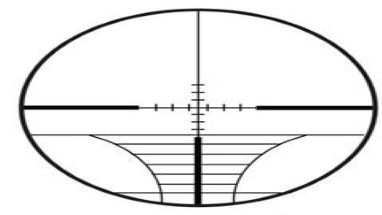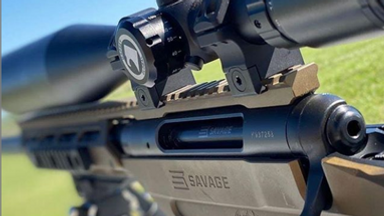Posted by Team Osprey on Jul 30th 2020
Illuminated Reticles, Are They Necessary?
Illuminated Reticles: What are they For?
Osprey Global Optics offer three color reticles, red green and blue, on nearly all of their riflescopes and AR optics. After the ‘oh cool!’ reaction, the next question I get is nearly always ‘what do I need three different colors on my reticle for?’
It is a very good question because not all riflescopes have them. Illuminated reticles do have their uses depending on your application. Most people will not use a color at all for the majority of their hunting or tactical applications but when it is time to use one, they can really come in handy. You will appreciate it if you have ever aimed at a black target like a hog, in the dark, with a black cross-hair. You will wish you had some version of a lit reticle. My Hog hunter scope I use regularly on blue is my favourite AR Optic Compact 3-9x42
Illuminated Reticle- Blue

The favorite, and arguably the most useful, is the blue reticle. My new Elite 4-16x56mm Optics has one and we use the blue reticle all the time, heres why: In a low light scenario your eyes build up a naturally accumulated night vision. You get better at seeing in low light the longer you spend the dark. A pilot friend of mine told me it takes 40 minutes to become accustomed to the cockpit or other dark setting. Turn on a light, or look into a scope with a blaring red or green reticle, it can shock your retina and rob you of all that accumulated night vision. The BLUE reticle won’t do that, so you can focus on your target, while being assisted by your reticle. A side benefit of the blue reticle, if you are color blind then you can see blue much better than red or green. It is also why People who are color blind prefer Blue Lasers.
Illuminated Reticle Scope: Red
Red can also be useful if you are using a Green Hog Light and a tactical riflescope. It will contrast directly with the green and give you a reticle that is very easy to find. Some people leave the red on during daylight so they don't see the color unless you pull up on a contrasting target with your riflescope. Some people simply have a preference for the red, finding it the brightest color for them to see. This depends on where you stand on the light spectrum. Color blind people are in the middle of the light spectrum therefore they cannot see red or green but blue is clear and crisp to them. In a similar way you can simply have a preference for one color over another.If you have a red reticle and you use a laser on your rifle then the ideal laser is a Green Laser. It contrasts well and stops you from getting your reticle and laser confused.
Illuminated Reticle Scope: Green
Green can simply come down to preference and where you sit on the color spectrum, most eyes will favor green. It will contrast directly with a red hog-light the same way a red reticle will contrast with a green one making the illuminated reticle easy to acquire. I find in a dark situation it has less affect on me losing my accumulated night vision than the red. I have also tried using it during the day to better result, contrasting on more various backgrounds than the red or blue. In a tactical situation many people opt for the green as it is the quickest color that your brain will find and this will assist in your critical target acquisition speed.
Are They Necessary?
If you have a riflescope with a lit reticle you will most likely use it less than ten percent of the time in a lit function, be it red green or blue. I personally enjoy lit reticles as long as I an do two things with them.
1 - Have The Ability To Turn them off
If you need a battery to retain the reticle or you always need to have the color on I steer clear of this style of optic. As cool as it may look in the store you will get sick of it always being on.
2 - Adjust The Intensity and Change The Color
When you do get a lit reticle, one recommendation that is unanimous amongst experienced shooters is to make sure that you are able to adjust the intensity. Ideally different colors also come in handy for the different low light situations you may encounter. Some scenarios require bright red and others low blues or off completley. Make sure you have those options and you will be able to make the best use of your optic.
Illuminated Reticle Analysis:
Like so many things in shooting and life, you do not need the illuminated reticles. We do not need more than one bullet, we do not need coffee or beer either for that matter. I tell people that lit reticles are like heated seats, you dont need them but on that frosty moriing in january, you are sure gonna be glad you got em.

